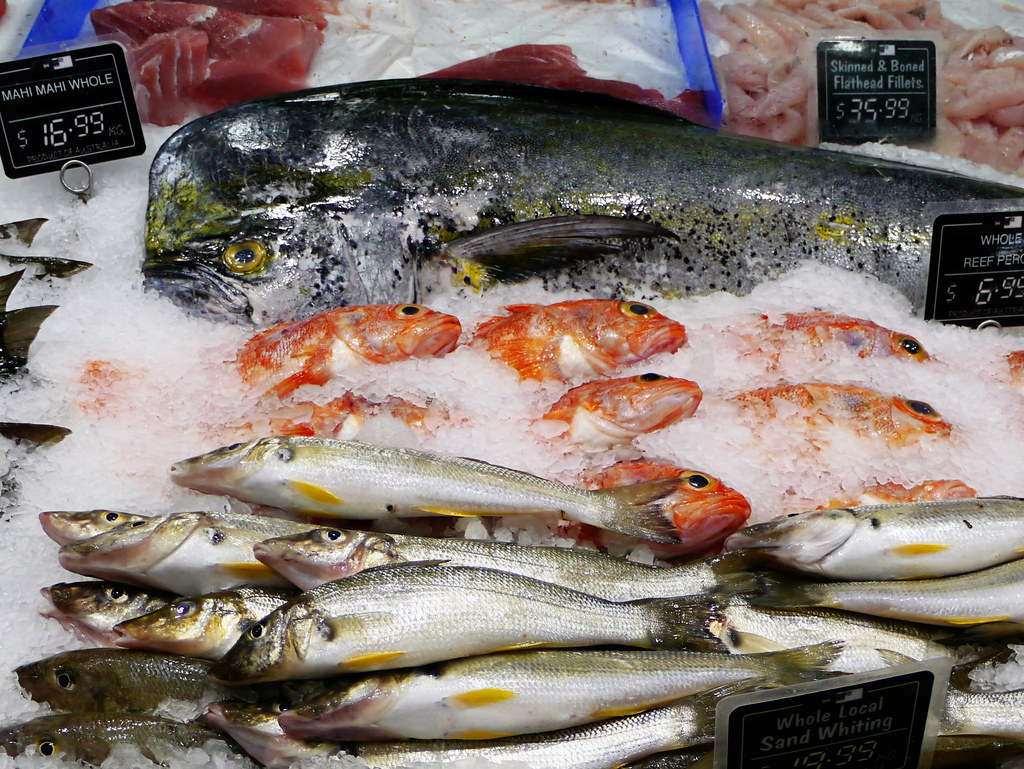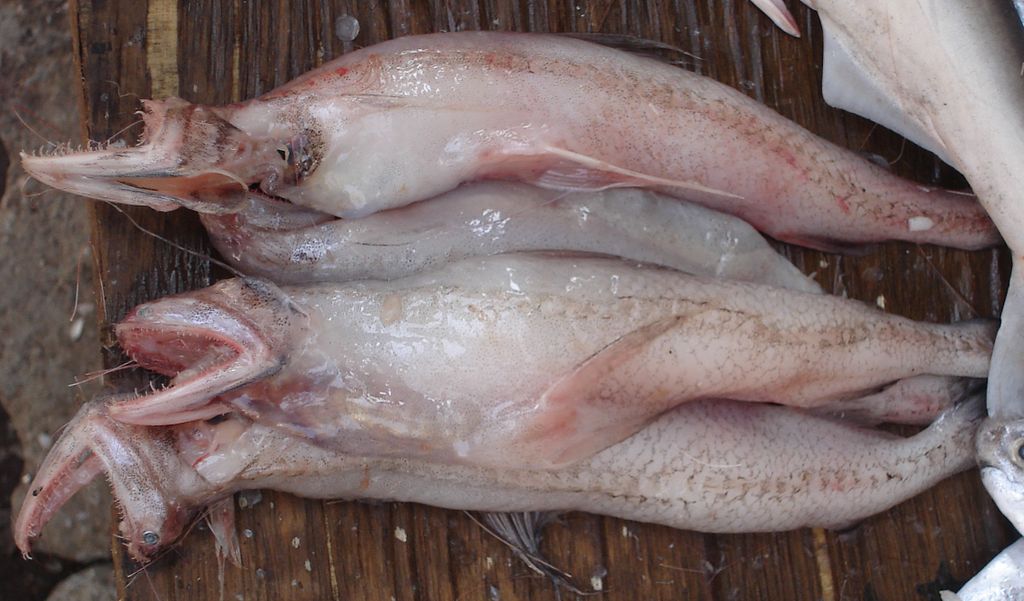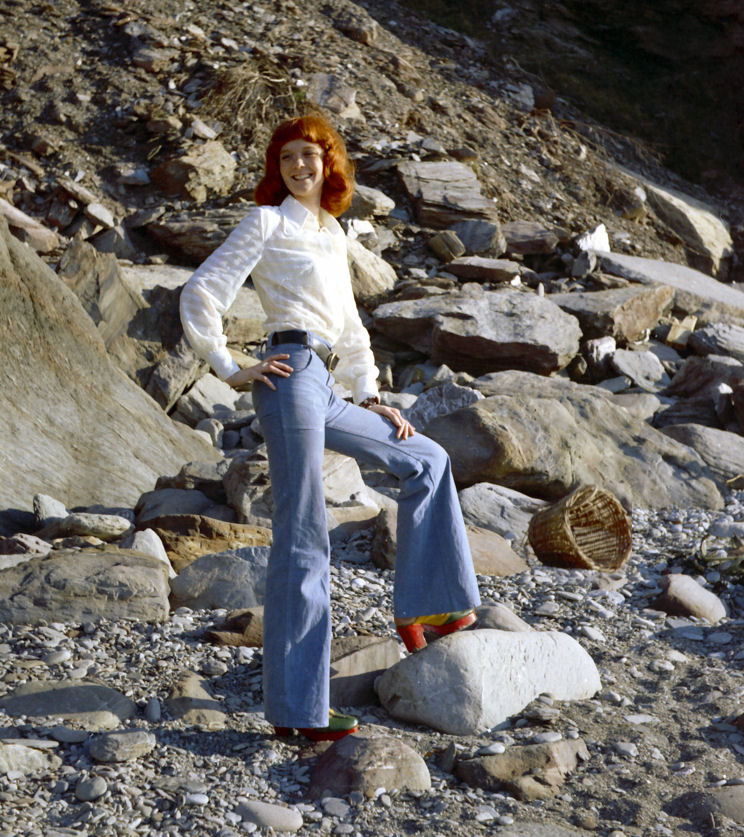
[dropcap]Since[/dropcap] around the time when I started this blog (over 3 months ago now – woohoo), I’ve experienced an increased interest in fish (and other seafood) as an ingredient/protein food. I’ve become more drawn to fish recipes, fish food photos, cooking and eating more fish dishes, and reading about fish in general. Who knows – perhaps soon, I might even start fishing as well? By the way, don’t you think they’re one of the most beautiful fish around? Look at them at their finest here and here. Sorry Bombay duck. Unfortunately, I find you to be extremely frightening, as exemplified here and here. 1
Perhaps, the name of this blog – padaek – had something to do with it? Perhaps it’s because my partner had decided to become a pescetarian/aquatarian (no meat but still eats fish), or perhaps it’s because we live in Oz and close to the coast where fresh fish/seafood are aplenty? Whatever the reasons, I’m not complaining because I love eating fish – its flavour, texture, aroma, versatility – and cooking with it too. And with so much variety of fish/seafood around and even more recipes/dishes to inspire me, there’s no time to get bored or complain. Sometimes, it’s nice to go with the flow.

With this fish energy looming in the air – recently, whilst browsing a second-hand store for photo props, I stumbled upon a great little fish cookbook that I want to share with you. It’s an oldie (older than me – just) but a goodie and I found it amid other shoppers looking for cookbooks too (woohoo – I found it first).
The book is titled “Fish Cookbook” by Elizabeth Sewell, published by Paul Hamlyn Pty Ltd (1972). It’s only a small book (about A5), with hardcover (and retro cover sleeve still intact too). It’s 120 pages long of traditional/classic fish/seafood recipes, fish cooking tips, beautiful b&w sketches and coloured fish dish photos. There’s even an original cute hand written mini gift card still inside.

“Fish Cookbook” is succinct and simple both in design and approach which is great for cooks who are in a hurry or want to kiss. It is comprised of easy to follow fish/seafood recipes (with ingredients both in metric and imperial). It covers a variety of fish/seafood dishes and include many traditional/classic recipes, such as garlic prawns, fish and chips, spaghetti marinara, etc. to ones I’ve not heard of before, eg: salmon koulibiaka (traditional Russian baked pie) and bouillabaisse (traditional Provençal fish stew). The book also contain fish facts (buying, freezing, cooking methods), and a short glossary of continental terms.
Some of you might be thinking – why bother buying a hardcopy cookbook, let alone an secondhand cookbook when there’s a billion free recipes available online? Now, look here – whilst I appreciate the convenience of recipes online or in digital format (blogs, apps, digital downloads, ebooks, etc ), I can’t forego the simple joy of having a real book in my hands that I can browse/flick through at my leisure, without the dependency on technology or the worry of its potential malfunction/gremlins. You know what I mean.

This is one of my favourite recipes in the cookbook. I think it looks delicious! I especially like how the mussels are served in their half shells – this is a simple process but makes the dish look so much more tasty to eat, don’t you think? I can’t wait to try this recipe to share with you.

Another recipe that caught my eye.

Unless you have an allergy or aversion to hardcopy books, you’d understand the joy of reading them. Real books, especially picture books such as cookbooks, are beautiful works of art – meticulously created and designed with awesome writing/editing, photography/styling, illustration/sketches, etc. To me, cookbooks (especially hardcover) are an extension of the culinary arts.
Call me old-fashioned/old-school if you want, but I enjoy the experience of reading books – being able to touch the pages and flick through them, smell the paper/ink, and doggy ear the pages if I want to. While cookbooks are still being printed today (although I sense their imminent decline), just like vintage objects – I enjoy finding old books by chance and buying/collecting them. It’s quite interesting to observe their design and perspective (a reflection of their heyday), how they’ve aged, and how they’re viewed now.

Old cookbooks like “Fish Cookbook” by Elizabeth Sewell can appear a little damaged and outdated on the surface but don’t judge a book by its cover, for some of the recipes/info you’ll find inside still holds true and presents a window to another time. Pick up an old cookbook and see for yourself just how valuable they can be. You might be surprised to discover how inspiring and relevant some of the recipes actually are.
Recipes come and go, and some recipes are more popular/successful than others. Some recipes obtain cult status and don’t really go out of style, such as spaghetti marinara or mussels à la marinière (mussels in white wine sauce) – similar to some fashion pieces such as turtlenecks and bell-bottoms/flares. It’s all a matter of taste, and often, some recipes only need slight adjustments/mods to make them suitable to the current/modern palate/taste again. Following recipes is great, but adding your own spin to it is a lot more fun. At the end of the day – all food is good food (unless you’re allergic to it).

Conclusion:
“Fish Cookbook” by Elizabeth Sewell (1972) is a great little fish cookbook. I’ve googled it and there seems to be little info about it and I suspect that it’s out of print? Fish cookbooks and fish recipes are aplenty online and off line. However, if you happen to stumble upon Elizabeth Sewell’s fish cookbook or be given one, be sure to keep it and browse the many wonderful pages and try some of the recipes. It takes little space and is a lovely introductory fish cookbook to own and add to your cookbook collection. I can’t wait to try/share some of the recipes with you. Stay tuned.
Title: Fish Cookbook
Author: Elizabeth Sewell
Publisher: Paul Hamlyn Pty Ltd
Publication Date: 1972
Length: 120 pages
Genre: Cookbook
Food for thought:
- What are you views on digital and printed cookbooks?
- Do you have any favourite cookbooks?
- Do you enjoy finding old cookbooks/recipes?
Notes:
- I haven’t eaten mahi mahi before but I’ve read that they taste great! I sometimes think they’re too beautiful to eat. By the way, did you know that mahi mahi lose their natural fabulous iridescent colour once they’re removed from the water? Regarding the Bombay duck, I’ve also read that they’re great to eat, and popular in parts of Asia. I must confess, I find them out of this world scary and grotesque, especially with their extreme gaping jaw and teeth. Eeek! ↩
- “Fish Cookbook”, Elizabeth Sewell, Paul Hamlyn Pty Ltd 1972. ↩